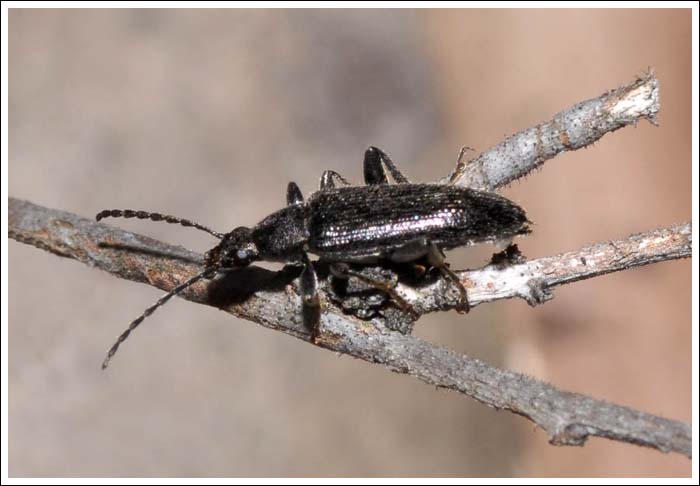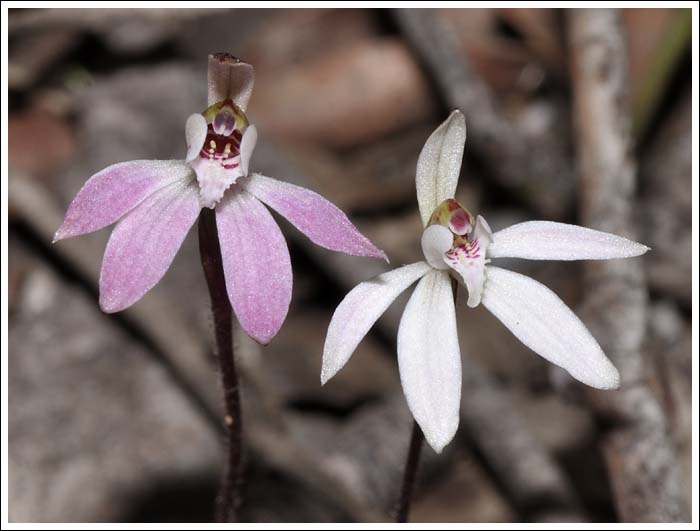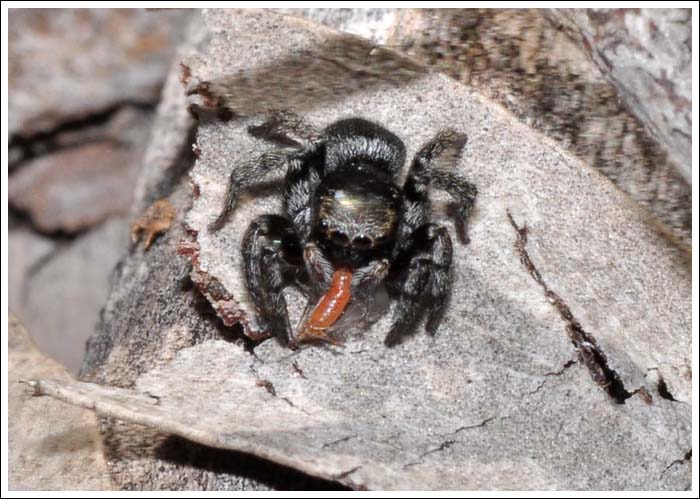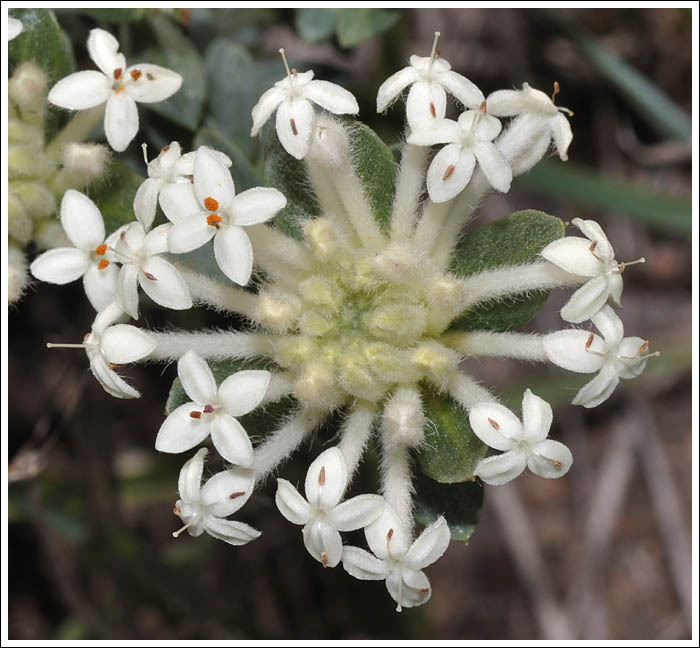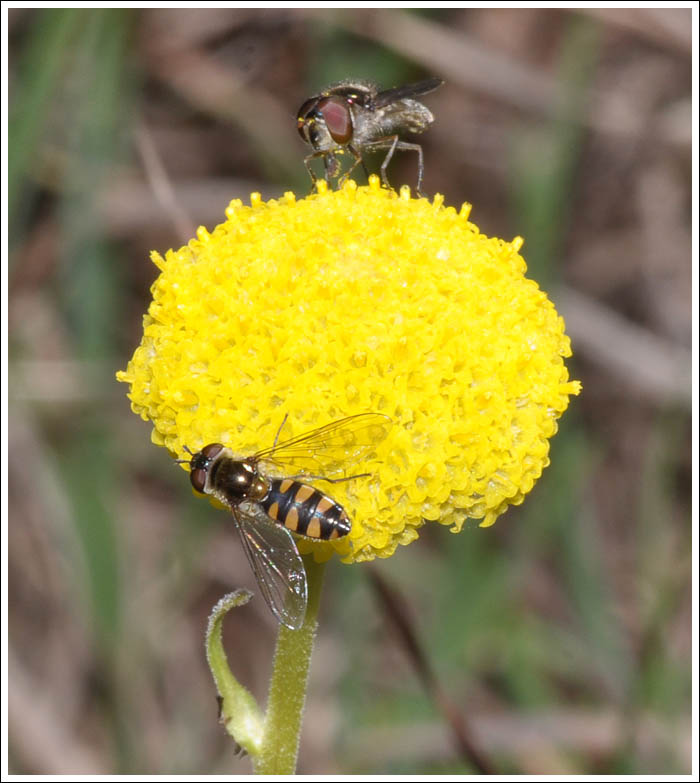A calm day saw the camera back in the box/ironbark bush beside Lake Glenmaggie, to continue monitoring flora and fauna as the new season progresses. The first sign of movement saw a small darkling beetle fly in to land on a twig in the forest floor litter.
Up on to the higher ground in search of orchids, and despite the dry conditions Caladenia fuscata was reasonably numerous although small in size.
An early Caladenia catenata, also small in stature, showed up.
Small moths were put to flight around the Lomandras but were too elusive to photograph, so the emphasis changed to a search for jumping spiders. A peacock jumper, Maratus plumosus frequents the edges of a track, but the search was unsuccessful, however another species that had caught a meal was a consolation prize.
On then to the Heyfield Flora Reserve to check on the Fairy Wax, Philotheca verrucosa. Once again the effects of the on-going dry conditions were very evident in the reserve, with few plants flowering and a general lack of other ground flora. In common with the previous location, birds were conspicuous by their absence, none were noticed and the only call heard was a Little Raven. It seems likely that the scarcity of invertebrate life at both sites has forced birds to shift camp in search of food at more fruitful sites.
Two of the previously mentioned small beetle were feeding on pollen on one plant.
While checking the last plant along the track before calling it a day, a buzzing heralded a rather magnificent and hitherto unrecorded bee fly zooming in to feed. With wings constantly flickering it stopped only briefly at each flower it sampled for nectar. There is always something new to see in the study of invertebrate life.
Click to enlarge.

